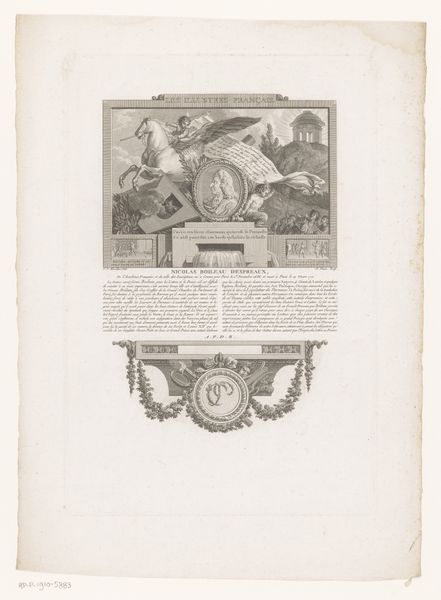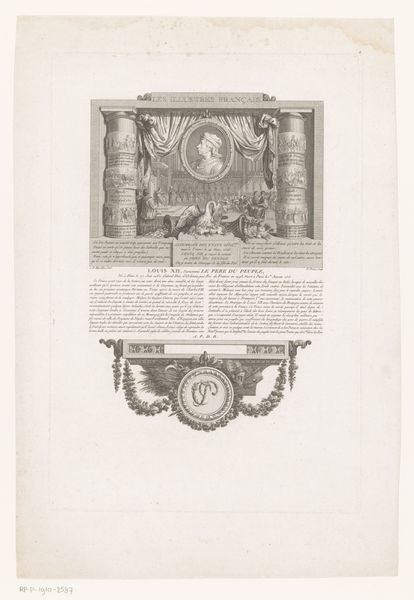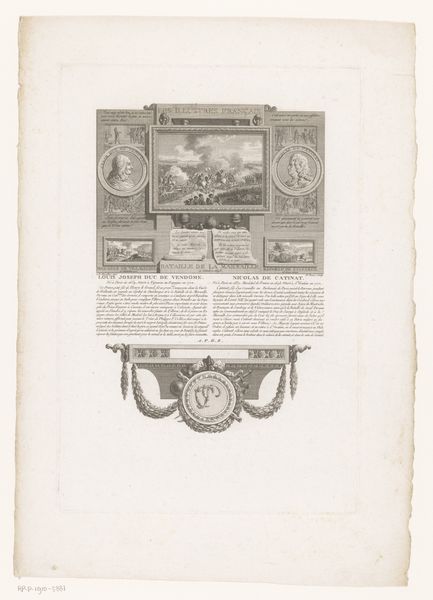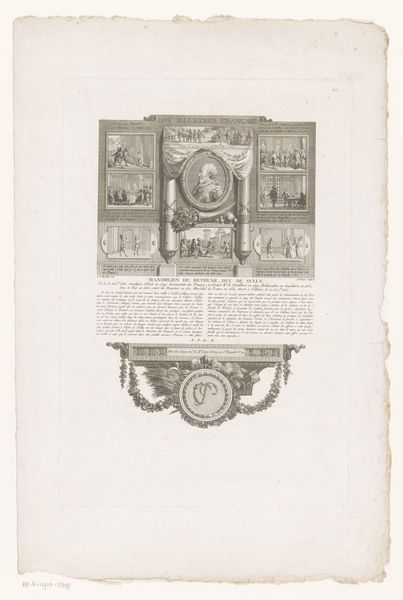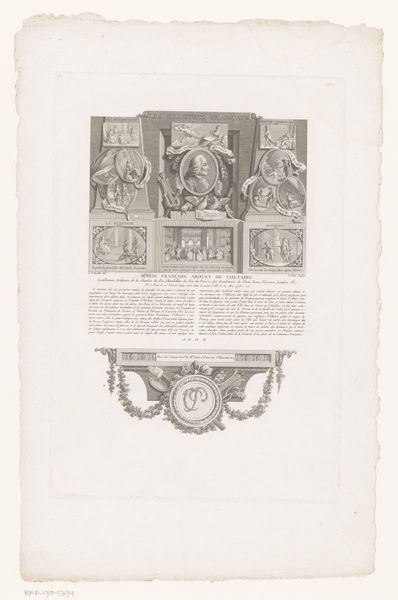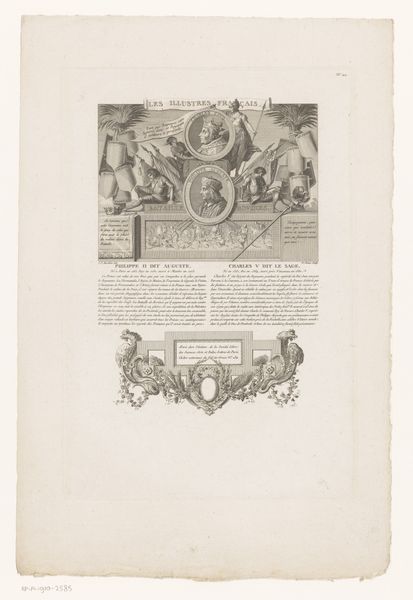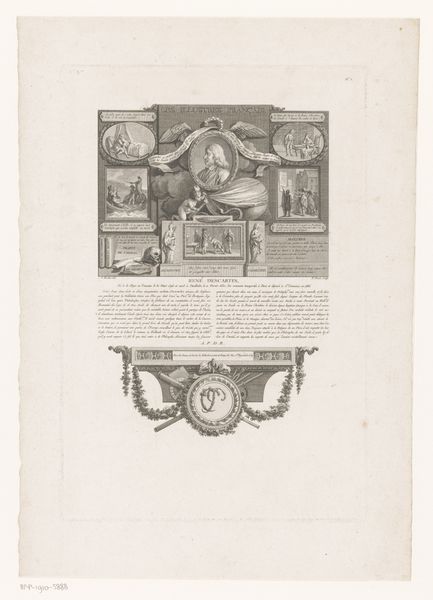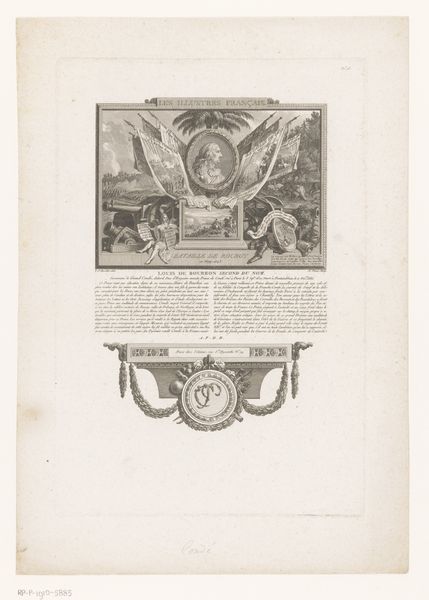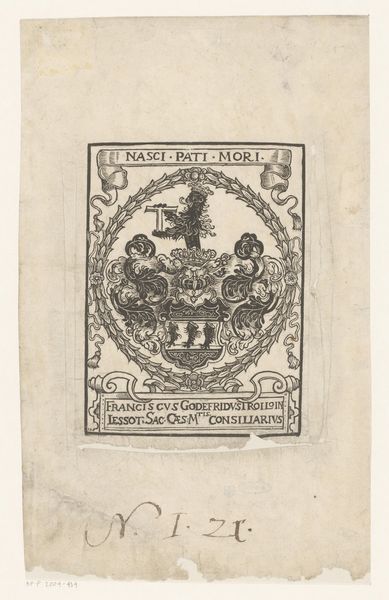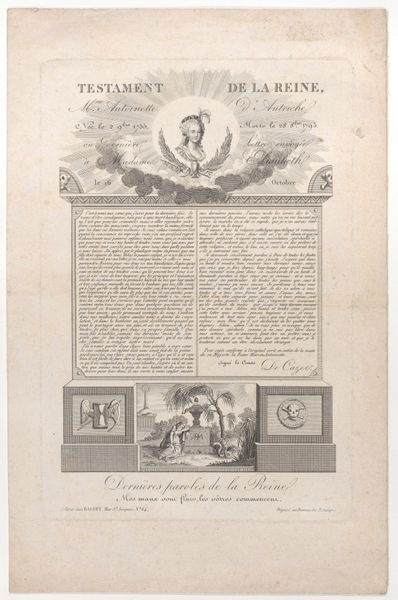
print, engraving
#
neoclacissism
#
allegory
# print
#
history-painting
#
engraving
Dimensions: height 336 mm, width 226 mm
Copyright: Rijks Museum: Open Domain
Curator: Here we have Nicolas Ponce's "Allegorical Portrait of Anne Hilarion de Tourville," an engraving dating roughly between 1790 and 1816. Its neoclassical style and attention to detail is quite striking. Editor: My initial impression is one of austere grandeur, perhaps reflecting the social climate in which it was made. The grey hues create a sense of formality and decorum, and the carefully wrought symmetry lends the artwork a balanced feel overall. Curator: Precisely. Note how Ponce structures the print into distinct registers, framed by architectural elements. We see Tourville's portrait enthroned above scenes from his naval career. Below this are inscriptions and emblems representing his virtues. A powerful piece of visual rhetoric. Editor: This is fascinating, when we delve into the allegorical layer. I think there's a strong argument that this glorification of a naval commander and nobleman can be interpreted through the lens of power structures during a period that ultimately culminated in Revolution in France, as people were struggling with concepts of freedom and societal hierarchy. How might this celebratory representation intersect with popular discontent? Curator: Indeed, and considering the historical painting style employed, the intention to document rather than create something aesthetically moving takes hold. Also, look closely at the engravings themselves that decorate the top. Ponce utilizes strong diagonal lines to evoke depth of the landscapes or sea scapes they contain. I appreciate how this directs the viewers eyes from the exterior architectural framing to the interior artistic spaces within the portrait. Editor: Viewing these vignettes showing key naval engagements of Tourville contextualizes how state-sanctioned artworks played a role in cementing narratives around military achievement. It's essential to consider the effect on social attitudes—and to what extent these pieces legitimized certain views on social hierarchies. What sort of legacy were pieces such as these hoping to perpetuate in the collective memory? Curator: I concede, but regardless of that aspect, this Neoclassical example reveals careful formal design that gives emphasis on the figure of Tourville himself, as well as demonstrating immense technique with form and symmetry to produce an object with balance, scale and order that stands out among its contemporaries. Editor: Well, I see the artwork leaving me with lots of questions about history and culture. That pushes me to think about not just technique, but also larger social influences embedded within, which is vital. Curator: A wonderfully vital thing, I might add, that both offers critical thought through complex meaning with technique!
Comments
No comments
Be the first to comment and join the conversation on the ultimate creative platform.
